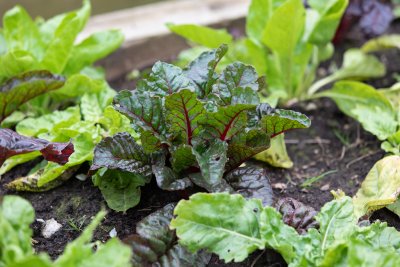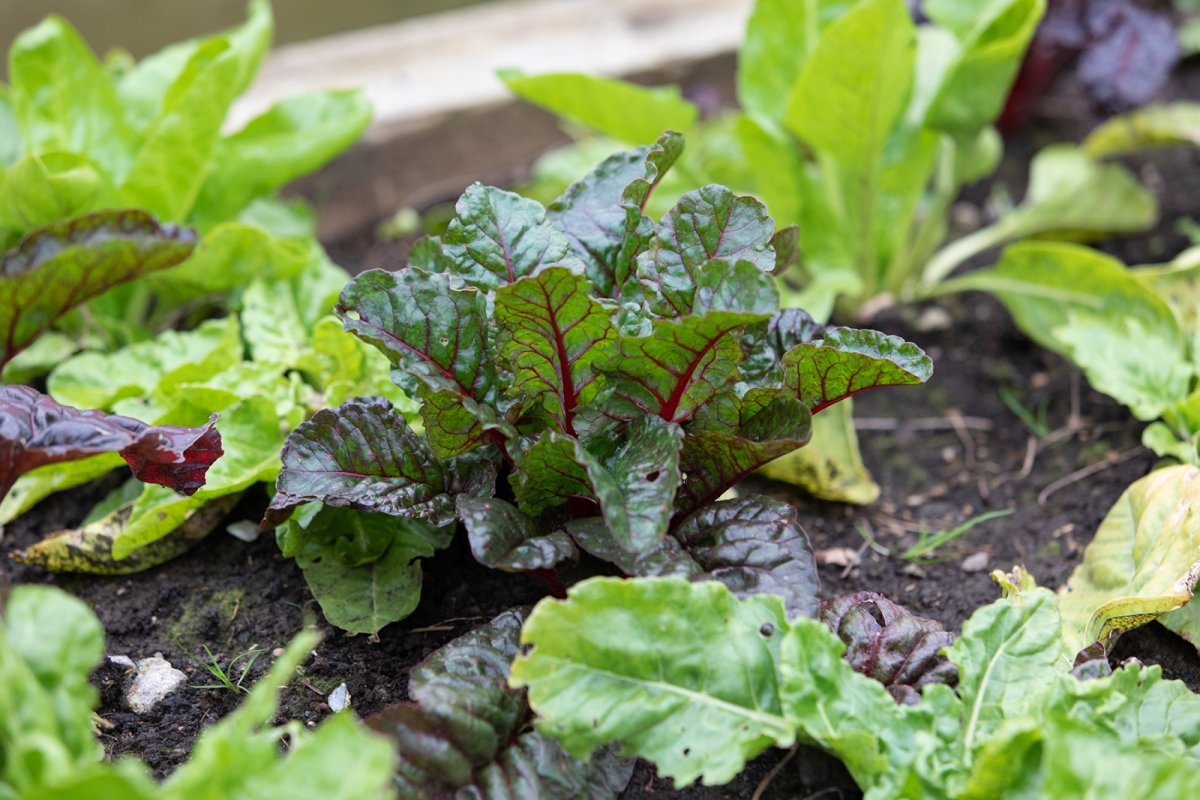 Surrey Docks Farm garden. Credit: Zoe Warde-Aldam
Surrey Docks Farm garden. Credit: Zoe Warde-Aldam
Growers' Corner: May
As things start heating up and many of us have more time spent in the garden, Capital Growth’s Julie Smith gives some tips for Spring gardening!
Keep it warm
Keep an eye on the weather and temperatures (especially overnight) as cold nights might damage your new seedlings until late May. Protect your young plants with horticultural fleece and cloches if in any doubt.
Transplanting time
Once your seedlings have outgrown their first pot/ module, you need to transplant them either in a big pot to keep indoors if it’s too cold outside, or in their final growing space. When are your seedlings big enough to be transplanted? When they have 6 leaves: 2 primordial leaves (called cotyledon) and 4 true leaves, that look like adult leaves. 
Fresh baby veg
For a steady supply of quick growing leaves and baby veg (like carrots and beetroot), sow seeds every two weeks. Young roots are delicious, can be harvested quickly (in 4-8 weeks) and can be eaten whole (with their leaves). If you lack space, use old drink cartons to create salad farms on your windowsill. 
Catch crops
If you are waiting for your main crops to start growing seriously (like potatoes, onion or broad beans), you can use the time before the plants get big to sow a few ‘catch crops’ of quick growing veg in between the existing plants. I particularly like cress and radishes
Less is more
To avoid gluts later in the year, limit what you plant out. For example, squashes germinate well, and if you have excitedly planted 10 seeds (I have!), you probably have 10 seedlings by now. They take quite a bit of space to grow and will be very productive. So you might not want to keep them all (unless you are a master at courgette bread, then go ahead). Instead, swap plants with other gardeners, friends and neighbours!
Companion plants
Get a well-rounded garden by planting a range of insect friendly flowers that will attract pest eaters while creating beautiful pops of colour in your veg patch. On my list are Pot marigold, French marigold, Sunflowers (the red ones are stunning!), wallflowers and nasturtium.
Keep the competition at bay
Spring is also the time where gardener pests get back at work. Check your garden daily and manually remove green and white flies (aphids), and slugs and snails. You can manage aphids by using home-made garlic spray: crush 1 head of unpeeled garlic, add 1 litre of boiling water, cool down, drain through a cloth in a spray bottle. Use liberally on your crops. For bad slugs and snail attacks, you can consider using nematode - or Join Capital Growth online training on managing pests on 27 May to find out more ways to manage pests as an organic gardener.
Find out more about Capital Growth online training
London Food Link: London Food Link brings together community food enterprises and projects that are working to make good food accessible to everyone in London to help create a healthy, sustainable and ethical food system for all.
Sustain
The Green House
244-254 Cambridge Heath Road
London E2 9DA
020 3559 6777
sustain@sustainweb.org
Sustain advocates food and agriculture policies and practices that enhance the health and welfare of people and animals, improve the working and living environment, promote equity and enrich society and culture.
© Sustain 2025
Registered charity (no. 1018643)
Data privacy & cookies
Icons by Icons8

